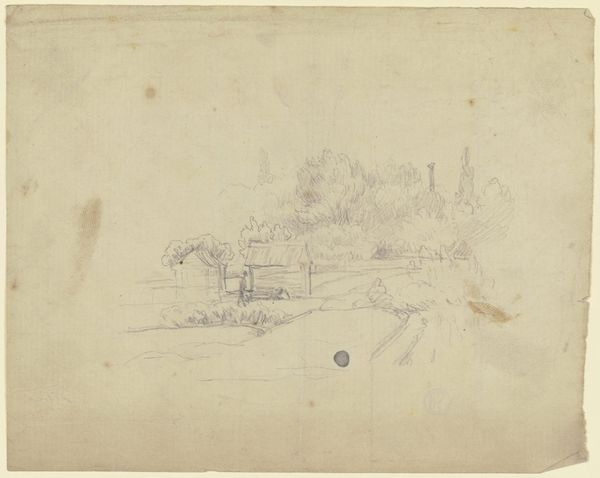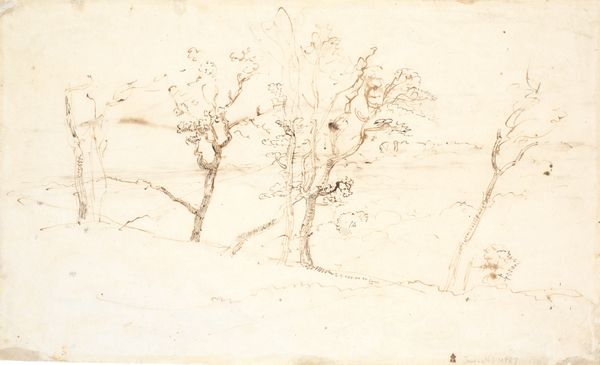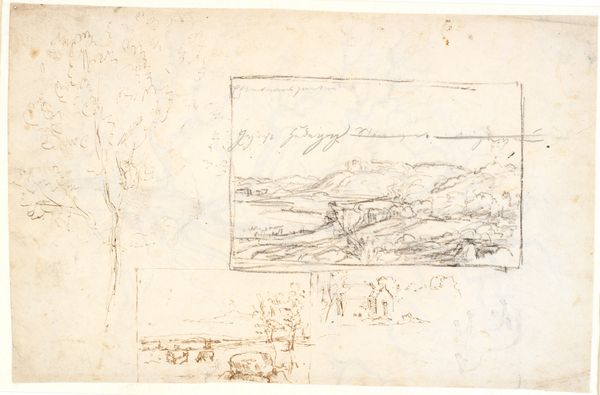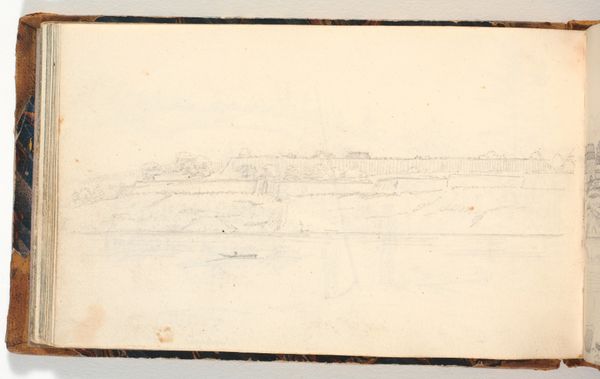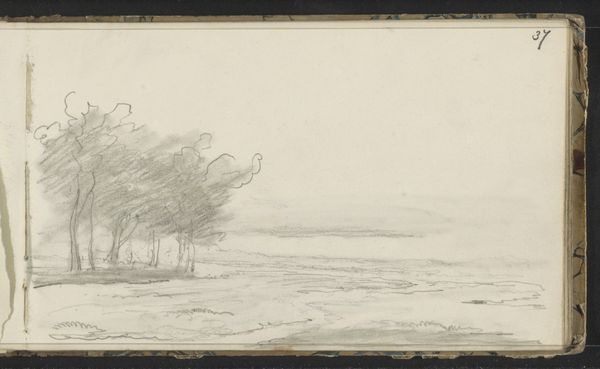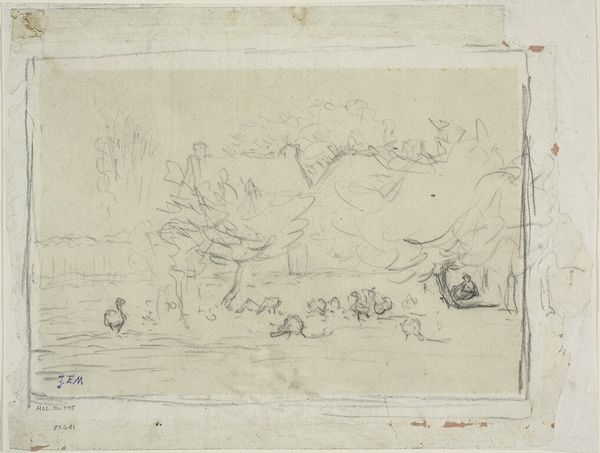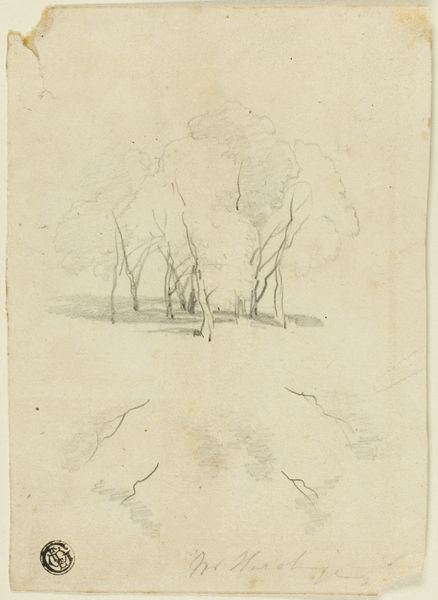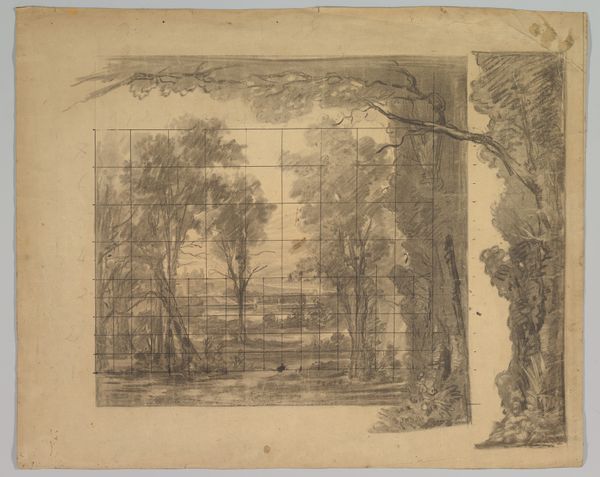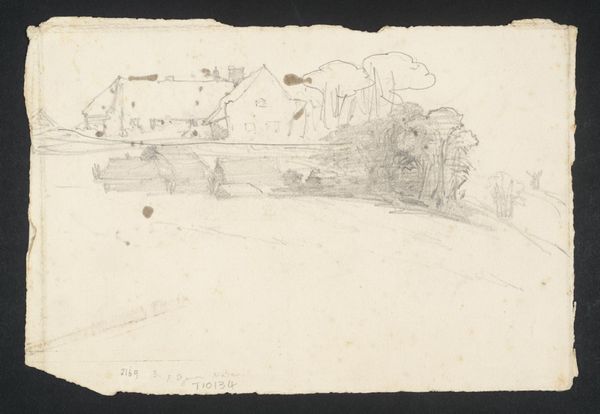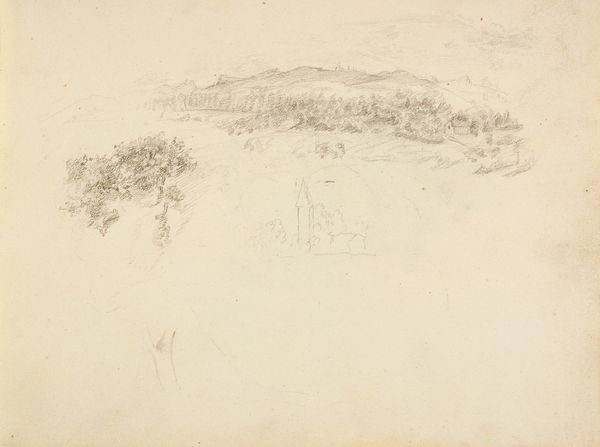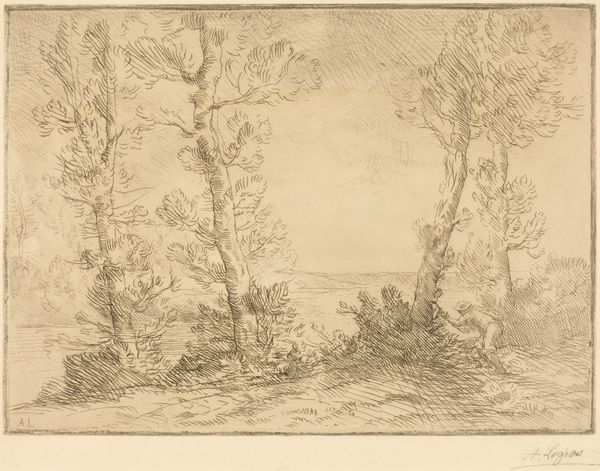
Copyright: Public Domain
Curator: Here we have Eugène Cicéri's "Design for a Stage Set," dating sometime between 1828 and 1890, currently residing at the Metropolitan Museum of Art. It's a pencil drawing on paper. Editor: It has a very dreamlike quality, a light wash of potential. The composition is deceptively simple, with a clear foreground, middle ground, and horizon line creating depth. Curator: Indeed. Note the grid-like underdrawing faintly visible beneath the sketch. This structural element is essential; it suggests a careful pre-planning, a mathematical approach to spatial design underpinning the ostensibly Romantic landscape. Editor: Right, I'm struck by the materials here – the pencil and paper, cheap and readily available, suggesting preliminary, practical work. But where did he get his paper? Looking at the deckled edge, the watermark, and the sizing, could we decode more of Cicéri's method of construction here, including his source? It also speaks to its function, more workaday, as something less precious. Curator: I would not disagree that these material choices do reveal something important about the artwork's function and its process, I am more concerned with its form, it allows the expression to be at its fullest potential. The atmospheric perspective used to render the distant town conveys an idealized scene; note also how light appears to emanate from an unseen source, casting delicate shadows, enhancing the overall visual effect of a sort of pastoral serenity. Editor: Well, beyond pure visuality and more into material culture, such design demanded specific labor conditions, collaborative networks in Cicéri's studio or the theater workshop – considerations that reshape our appreciation of his skill as an independent maker. Who else labored on the production on this art and its destination? Curator: Certainly those production contexts are relevant to consider. It is undeniable, that regardless of the work put in outside of it, it stands as a cohesive and affecting pictorial achievement due to the artist's choices in composition and rendering of space. Editor: For me, what interests me most, is uncovering those external forces outside of its final framing. Still, I see that it may evoke something much larger in the person looking at the scene depicted here. Curator: Precisely. Its ethereal qualities offer much for the romantic-era wanderer in us to identify with.
Comments
No comments
Be the first to comment and join the conversation on the ultimate creative platform.
